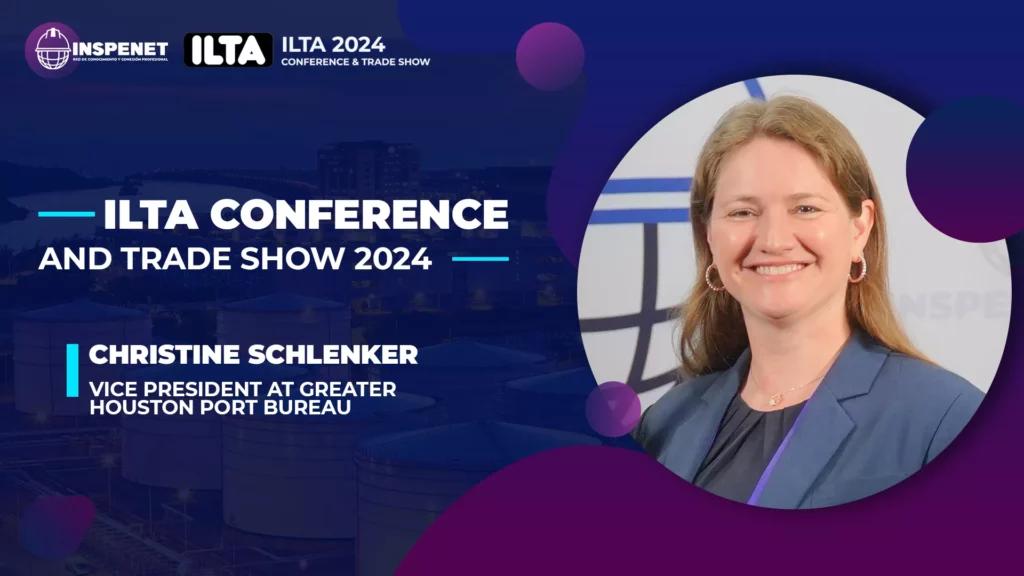Christine Schlenker, Vice President of the Greater Houston Port Bureau (GHPB), presented on port efficiency projects at the International Liquid Terminals Association (ILTA) 2024 conference. In a interview with Inspenet, Schlenker highlighted the GHPB focus on enhancing collaboration among port stakeholders in the Houston region, which encompasses the major ports of Houston, Galveston, Texas City, and Freeport.
Schlenker spoke about the immense economic impact of the Houston port system. She revealed that the Houston port alone contributes nearly $1 trillion in annual value to the United States, making it the largest port by tonnage in the country. Additionally, the surrounding ports contribute significantly, with Texas City ranking in the top 10-15 by tonnage and Galveston holding the title of the 4th busiest cruise port in the nation.
While acknowledging the port system’s impressive trade volume, Schlenker addressed key areas for improvement, particularly regarding chemical tankers. These tankers often make multiple stops at various terminals across the vast Houston port complex, leading to inefficiencies in scheduling and berth availability. Traditionally, a “first-come, first-served” approach created delays, with tankers potentially waiting hours at anchor for their next berth.
Schlenker identified improved communication among port stakeholders as a key solution. To address this, the GHPB is spearheading initiatives like the Efficiency Committee, which fosters collaboration between port entities. They're also creating a standardized data language with a Data Dictionary and a Port Process Map, inspired by London's Tube map, to visually clarify roles and data sharing needs. Finally, a Digitalization Blueprint serves as a roadmap for companies to modernize operations and integrate with the port's digital ecosystem.
The adoption of these initiatives varies across port users. While some companies have already embraced advanced technologies and data sharing, others rely on less sophisticated methods like whiteboard scheduling. The GHPB aims to bridge this gap by providing a clear path for digitalization, ensuring all stakeholders can participate in a more efficient port system.

For more content related to the conference visit inspenet.com/en/inspenet-tv/ and our Youtube channel.